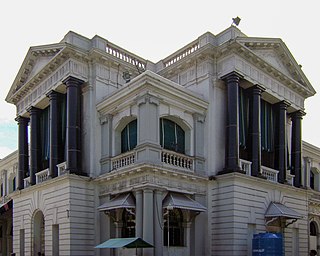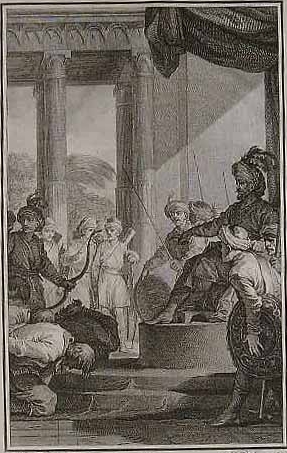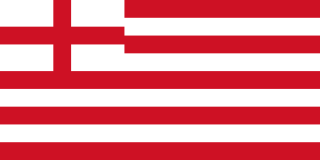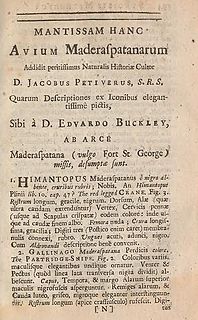Related Research Articles

Sir Streynsham Master was an English colonial administrator who was one of the 17th-century pioneers of the English East India Company. He served as the Agent of Madras from 27 January 1678 to 3 July 1681, and is credited with having introduced the first administrative reforms in the Madras Government. He banned sati and prohibited the burning of a Hindu widow in 1680 in what is the first official British response to sati. He made English the sole official language and language of court in the Madras Presidency, replacing the Portuguese, Tamil and Malayalam languages.

Fort St. George is a fortress in the coastal city of Chennai, India. Founded in 1639, it was the first English fortress in India. The construction of the fort provided the impetus for further settlements and trading activity, in what was originally an uninhabited land. Thus, it is a feasible contention to say that the city evolved around the fortress. The fort currently houses the Tamil Nadu legislative assembly and other official buildings.

Fort William is a fort in Hastings, Calcutta (Kolkata). It was built during the early years of the Bengal Presidency of British India. It sits on the eastern banks of the Hooghly River, the major distributary of the River Ganges. One of Kolkata's most enduring Raj-era edifices, it extends over an area of 70.9 hectares.

Job Charnock was an English administrator with the East India Company. He is commonly regarded as the founder of the city of Kolkata ; however, this view is challenged, and in 2003 the Calcutta High Court declared that he ought not to be regarded as the founder. There may have been inhabitants in the area since the first century CE. The High Court was right in claiming that villages that constituted colonial Calcutta were not established by Charnock or the British Raj itself, but Charnock’s ambition-driven doggedness toward setting up a East Indian Company frontier along the Eastern border of India that he could control on his own terms played a huge role in the creation of present day city of Calcutta.

Chennai, formerly known as Madras, is the capital of the state of Tamil Nadu and is India's fifth largest city. It is located on the Coromandel Coast of the Bay of Bengal. With an estimated population of 8.9 million (2014), the 383-year-old city is the 31st largest metropolitan area in the world.
Kolkata is the capital of the Indian state of West Bengal and is located in eastern India on the east bank of the River Bhagirathi-Hooghly (Ganga). The city was a colonial city developed by the East India Company and then by the British Empire. Kolkata was the capital of the British Indian empire until 1911, when the capital was relocated to Delhi. Kolkata grew rapidly in the 19th century to become the second most important city of the British Indian Empire. This was accompanied by the development of a culture that fused Indian philosophies with Victorian tradition.
Sir William Hedges was an English merchant and the first governor of the East India Company (EIC) in Bengal.

Sir Edward Winter (?1622–1686) was an English administrator employed by the East India Company (EIC).

Sir William Langhorne, 1st Baronet was the Agent of Madras from January 1670 to 27 January 1678.
William Gyfford was an English factor and Agent of Madras from 3 July 1681 to 8 August 1684 and the President of Madras from 26 January 1685 to 25 July 1687.

Edward Harrison was a naval officer and official of the East India Company and British politician who sat in the House of Commons from 1717 to 1726. He served as the President of Madras from 11 July 1711 to 8 January 1717.

William Fraser was a British merchant and administrator who was the Acting President of Madras from 14 November 1709 to 11 July 1711.
Edmund Montague was the Acting Governor of Fort St George from 17 October 1709 to 18 November 1709.

Sir Charles Eyre was an administrator of the British East India Company and founder of Fort William, Calcutta. He was a President of Fort William.
James Macrae was a Scottish seaman and administrator who served as the President of Fort St George from 1725 to 1730. He is known for naval exploits against the pirate Edward England and for reforming the administration of Madras Presidency.

The Anglo-Mughal War, also known as Child's War, was the first Anglo-Indian War on the Indian Subcontinent.
Richard Benyon (1698–1774) was a British merchant and colonial administrator who served as the President of Madras from 23 January 1735 to 14 January 1744.
James Talboys Wheeler was a bureaucrat-historian of the British Raj.

Bantam Presidency was a presidency established by the British East India Company and based at the Company factory at Bantam in Java. Founded in 1617, the Presidency exercised its authority over all the Company factories in India, including the agencies of Madras, Masulipatnam and Surat. The factors at Bantam were instrumental in founding the colony of Madraspatnam in 1639 with the Fort St. George, which later grew into the modern city of Madras. The Presidency of Bantam was twice downgraded, first in 1630 before being restored in 1634 and for the second time in 1653, when owing to the hostility of Dutch traders, the Presidency was shifted to Madras.

Edward Bulkley was an East India Company surgeon (1602-1709) posted in Madras and a pioneer naturalist. He corresponded with James Petiver and was the first to document the bird species of which a list of birds was published by John Ray. Ray incorrectly notes him as "Buckley". Bulkley also studied the local plants and corresponded with the Jesuit botanist Georg Joseph Kamel and acted as an intermediary between Kamel and Petiver. Bulkley corresponded with Charles du Bois on plants and collected Tamil and Telugu names for many medicinal and economically useful plants.
References
- ↑ Stephen, Leslie; Lee, Sidney, eds. (1890). . Dictionary of National Biography . Vol. 22. London: Smith, Elder & Co.
- ↑ James Talboys Wheeler, Madras in the Olden Time: Being a History of the Presidency from the First Foundation, J. Higginbotham, 1861, p.249
- ↑ John Holland Rose, Arthur Percival Newton, Ernest Alfred Benians, Henry Dodwell, The Cambridge History of the British Empire, Volume 1, CUP Archive, 1929, p.102
- ↑ James Talboys Wheeler, Madras in the Olden Time: Being a History of the Presidency from the First Foundation, J. Higginbotham, 1861, p.249
- ↑ Sudip Bhattacharya, Unseen Enemy: The English, Disease, and Medicine in Colonial Bengal, 1617–1847, Cambridge Scholars Publishing, 30 Jun 2014, p.54
- ↑ Sudip Bhattacharya, Unseen Enemy: The English, Disease, and Medicine in Colonial Bengal, 1617–1847, Cambridge Scholars Publishing, 30 Jun 2014, p.54
- ↑ Henry Davidson Love, Indian Records Series Vestiges of Old Madras 1640–1800, Mittal Publications, p.553